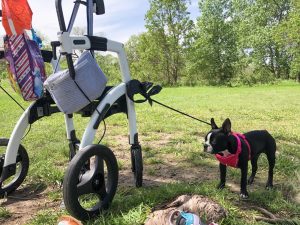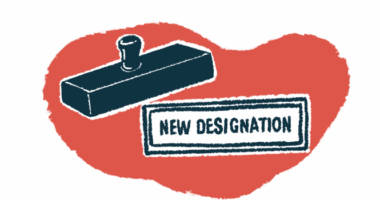Training a New Puppy Isn’t Easy, But It’s Worth It

I’m always alarmed when I notice the progression of my Friedreich’s ataxia (FA) symptoms, which highlight the harsh reality of my progressive neurological disease. Recently we got a new puppy, and training her has highlighted my FA progression.
The last time I had a puppy was 2008. I got my sweet Boston terrier Boomer when he was 9 weeks old. He lived with me in my college apartment, and I potty trained him and taught him basic tricks. I also leash trained him and got him addicted to playing fetch.
I was able to do everything required for a puppy: I could chase him down. I could scoop him up. I could carry him to the spot where he had potty accidents to correct him. I could run to his rescue when he was about to fall off the couch. I could lug around heavy dog food bags. I took him on adventures on hiking trails and in dog parks. I absolutely loved having a puppy.
This was all before I began showing symptoms of FA, which began in 2013. Boomer has been my companion for 12 years. He was with me the first day my husband, Kyle, moved in after we got married. He went to sand volleyball and coed softball with us every week. He quickly befriended his new “fur brother,” our cat, Ollie.
Boomer didn’t leave my side on the sleepless nights I spent crying after my FA diagnosis. He snuggled my pregnant belly and graciously welcomed home my son, and then my daughter. He quickly adjusted to my using a walker.
He is getting older now and slowing down, so we randomly decided to get a puppy to reinvigorate his routine and keep him active.
Naively, I didn’t think twice about how FA would complicate my ability to train and raise a puppy before we impulsively adopted another Boston terrier a few weeks ago, Betty Jo. It certainly has been an adjustment. I can’t be there for Betty Jo the way I was for Boomer.
Luckily, she isn’t fazed by my walker. She doesn’t seem afraid of it and we haven’t gotten in each other’s way. However, because my hands are always on my walker handles, I don’t have the ability to carry her around. This makes it really difficult to potty train her. I can’t take her over to the “scene of the crime” to scold her accidents. I can’t scoop her up and take her out in the backyard when she starts sniffing for a potty spot. I can’t sprint over to grab things from her mouth when she’s eating something she shouldn’t.
This new reality has taken some adjustments, allowing me to be creative in my training adaptations. She is a smart dog, and we are figuring things out together.
My 5-year-old son, Brooks, adores Betty Jo (and vice versa). He has been a huge help with her. Brooks loves scooping her up and carrying her outside or to her bed. He loves playing fetch out in the yard with her. They are quickly becoming best friends, and I am so thankful for that.
She also happily walks on her leash when I secure its handle to my walker.
I am glad that I didn’t overthink the decision to get a new dog. My family would have missed out on all of the joy and laughter that Betty Jo has brought to our lives in the two weeks she’s been in our family. My day-to-day life isn’t quite what I had imagined, but it is still wonderful.
To follow Betty Jo’s adventures, follow my Instagram account @kendallcapeharvey.
***
Friedreich’s Ataxia News is strictly a news and information website about the disease. It does not provide medical advice, diagnosis or treatment. This content is not intended to be a substitute for professional medical advice, diagnosis, or treatment. Always seek the advice of your physician or another qualified health provider with any questions you may have regarding a medical condition. Never disregard professional medical advice or delay in seeking it because of something you have read on this website.












Leave a comment
Fill in the required fields to post. Your email address will not be published.